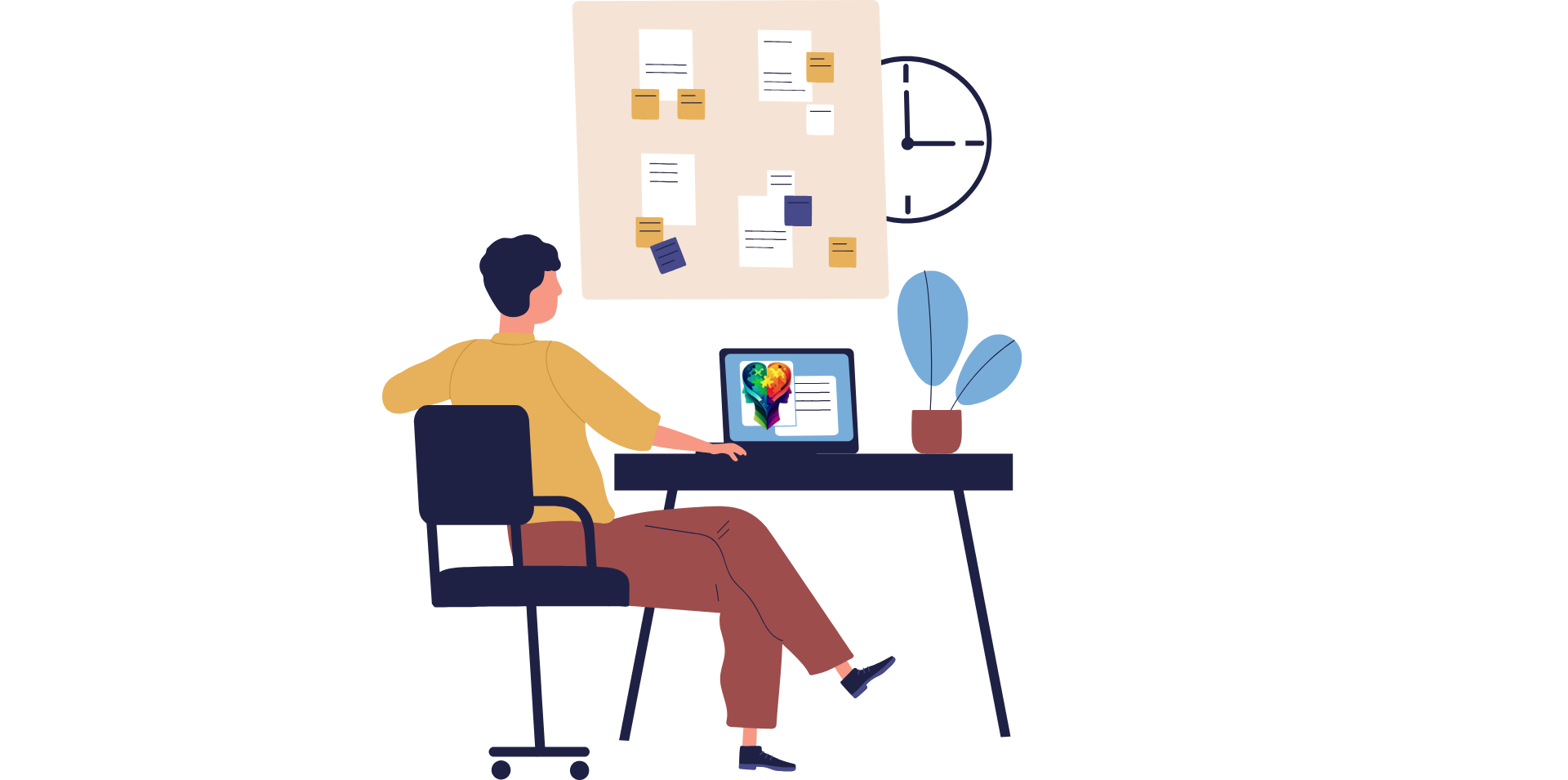ADHD can be a powerful driver for creative, flexible, and profitable side hustles when harnessed strategically. By aligning work with natural energy patterns, breaking tasks into manageable micro-steps, rotating projects to maintain momentum, and building supportive communities, individuals can transform potential challenges like distraction or disorganization into strengths. With the right productivity tweaks, accountability systems, and a focus on novelty, side hustles can become not only sustainable income sources but also deeply fulfilling outlets for self-expression and growth—proving that neurodiverse minds can thrive in the world of independent work.

ADHD Side Hustles: Turning Energy and Creativity into Income
Introduction
Side hustles can be a perfect fit for ADHD minds, offering flexibility, novelty, and opportunities to monetize creativity while working with—rather than against—natural attention patterns. Unlike rigid career tracks, side hustles allow the ADHD brain to engage in bursts of intense focus, explore multiple interests, and adapt work to shifting energy levels. This flexibility isn’t just convenient—it’s the foundation for turning what is often framed as a “challenge” into a unique professional advantage.
Why this matters
Traditional 9-to-5 roles often clash with ADHD traits such as spontaneous hyperfocus, the constant search for new stimulation, and a lower tolerance for repetitive, mundane tasks. Over time, this mismatch can lead to burnout, underperformance, and a frustrating sense of untapped potential. Side hustles offer a different equation: instead of forcing the ADHD mind into a narrow channel, they create a wide, flowing river where strengths—creativity, problem-solving, quick adaptability—become assets. When chosen wisely and managed with supportive systems, side hustles can transform perceived “quirks” into competitive advantages.
Intended audience and purpose
This article is for:
- Adults and teens with ADHD who want to explore income opportunities without sacrificing mental health or creative freedom.
- Caregivers, educators, and life coaches who support individuals with ADHD and are looking for empowering, sustainable work options.
- Neurodiversity advocates committed to building inclusive, flexible economic ecosystems where all minds can thrive.
The purpose is to provide:
- Practical inspiration through side hustle ideas tailored to ADHD strengths.
- Sustainability strategies to maintain momentum despite distraction or changing interests.
- Community-oriented approaches that reduce isolation and encourage mutual growth.
Structure preview
This journey will take you through:
- Why side hustles are naturally aligned with ADHD strengths—and how they can be more fulfilling than conventional jobs.
- How to select ADHD-friendly side hustle ideas that play to your unique energy patterns.
- Simple, effective sustainability hacks to keep projects moving without burnout.
- The role of community and accountability in helping ADHD entrepreneurs and freelancers flourish.
1. Why Side Hustles and ADHD Are a Natural Match
The flexibility and variety that side hustles offer are more than just appealing perks for individuals with ADHD—they are lifelines that align directly with how the ADHD brain is wired. Rather than forcing a strict, repetitive schedule, side hustles allow you to work in bursts, pivot when inspiration strikes, and design your own structure. This freedom is not about avoiding discipline; it’s about creating the right kind of discipline—one that works with your brain instead of against it.
Core Ideas
- Autonomy and control reduce burnout
In traditional jobs, external control over tasks, pace, and priorities can feel stifling, especially for someone with ADHD. Having autonomy over what you work on, when you work on it, and how you approach it removes a major source of stress. It also increases ownership, which naturally fuels motivation. - Quick feedback loops sustain interest
ADHD brains thrive on stimulation and immediate feedback. Side hustles that deliver visible progress—such as completing a project in a day or receiving instant customer responses—create a cycle of satisfaction that keeps you coming back. Without quick wins, motivation can fade; with them, momentum builds naturally. - Variety fuels dopamine and keeps motivation alive
Monotony can be kryptonite for ADHD productivity. Side hustles often allow you to juggle different types of work—switching between creative, technical, and interpersonal tasks—which keeps the brain engaged. This variety isn’t a distraction; it’s a powerful tool for maintaining focus over time.
Actionable Exercise: Map Your Daily Energy Highs and Lows
Before diving into a side hustle, take one week to track your natural energy patterns.
- Set up a simple log—paper journal, phone notes, or a time-tracking app.
- Check in every 2–3 hours: rate your focus and energy on a scale of 1–10.
- Look for patterns—are your peak hours early morning, late at night, or after physical activity?
- Match your hustle tasks to your peaks—do your most creative or demanding work during your highest energy windows, and save admin or repetitive work for lower-energy times.
When you align work with your brain’s rhythms, you reduce the need for constant self-discipline and increase the likelihood of consistent progress—without the burnout cycle.
2. Identifying Your ADHD-Friendly Side Hustle Niche
The best side hustle for an ADHD mind isn’t necessarily the one with the highest earning potential on paper—it’s the one that excites you, plays to your natural strengths, and fits seamlessly into your lifestyle. When you choose work that sparks genuine interest, your brain is more likely to enter a state of hyperfocus, making tasks feel engaging rather than draining. This intrinsic motivation is the fuel that keeps you moving forward when novelty begins to fade.
Selection Criteria
- Low startup cost, high flexibility
ADHD success thrives in low-pressure environments. Choosing a side hustle with minimal upfront investment allows you to explore without the stress of heavy financial risk. Flexibility means you can adapt your schedule, change your approach, or pivot to a new idea without losing momentum. - Immediate ability to deliver results
The ADHD brain craves instant feedback. Side hustles that allow you to start small and see results quickly—whether it’s a completed project, a first sale, or positive feedback—help sustain motivation and reinforce confidence. - Creative or problem-solving components
Work that stimulates imagination or challenges you to solve problems keeps the brain engaged and dopamine flowing. Side hustles with a strong creative or analytical element are less likely to feel monotonous, making them easier to stick with long term.
Examples of ADHD-Friendly Side Hustles
- Creative:
- Graphic design for small businesses or social media accounts.
- Photography or videography, particularly for events or niche markets.
- Crafting, jewelry making, or personalized art commissions.
- Content creation (YouTube, blogging, podcasting) on topics you’re passionate about.
- Service-based:
- Tutoring in academic subjects, arts, or skills you excel at.
- Virtual assistance for entrepreneurs (email management, scheduling, research).
- Pet care or dog walking.
- Event support—helping with planning, setup, or coordination.
- Tech-enabled:
- Social media management for brands or individuals.
- Web design for small businesses or nonprofits.
- Freelance research or fact-checking for writers, journalists, or companies.
Actionable Tip: Test Before You Commit
Pick 1–2 side hustle ideas that excite you and run small, low-risk experiments:
- Set a short trial period—two weeks to one month.
- Offer a small-scale service to friends, family, or local networks, or post on freelance platforms.
- Track your engagement and energy—were you excited to work on it, or did it feel like a chore?
- Decide to scale, tweak, or drop the idea based on both enjoyment and results.
This trial-and-error approach prevents overcommitment to a hustle that drains you and ensures you choose one that aligns with your strengths, interests, and lifestyle.
3. Overcoming ADHD Challenges in Side Hustles
With the right strategies, common ADHD challenges—such as distraction, boredom, and disorganization—don’t have to derail your side hustle. Instead, they can be managed, minimized, and even leveraged. The key is to design systems that match how your brain operates rather than trying to force yourself into traditional productivity molds.
Key Approaches
- Break work into micro-tasks with visible progress markers
Large, vague tasks can feel overwhelming and trigger procrastination. Breaking them into small, specific steps provides clarity and gives you a sense of accomplishment at each milestone. Use checklists, sticky notes, or digital boards where you can visually mark tasks as complete—seeing progress in real time fuels motivation. - Use “body doubling” or accountability partners
ADHD brains often focus better when another person is present, even if they’re working on something entirely different. This is known as “body doubling.” You can meet in person, connect via video call, or join virtual coworking spaces. Adding an accountability partner who checks in regularly also helps maintain momentum. - Work in short, timed sprints with rewards
Instead of trying to power through hours of work, break your sessions into short, high-intensity sprints—such as 15–25 minutes—followed by a short break. Pair each sprint with a small reward: a snack, a stretch, or a quick scroll through something you enjoy. This helps maintain focus while reducing burnout. - Automate or outsource repetitive tasks
Routine, repetitive tasks can drain focus and enthusiasm. Use tools to automate processes—such as scheduling posts, sending invoices, or tracking expenses—or outsource them to freelancers or virtual assistants. This frees you to focus on the creative or high-impact aspects of your hustle.
Actionable Tip: Trial One Hack for Seven Days
Instead of overhauling your entire workflow at once, pick one of the above strategies and commit to testing it for a week. Keep a simple log of:
- How much work you completed.
- How engaged or bored you felt.
- Any changes in your stress or energy levels.
At the end of the week, decide whether to adopt, tweak, or replace the strategy. This gradual, experimental approach prevents overwhelm and ensures you find solutions that truly fit your brain’s needs.
4. The Power of Project Rotation
For many with ADHD, boredom is the silent killer of productivity. Once the novelty fades, enthusiasm can plummet—often long before the work is finished. Project rotation is a powerful way to keep momentum alive. By cycling between a small set of side hustles with different creative demands, you give your brain the variety it craves while still making steady progress across multiple ventures.
How to Rotate Effectively
- Maintain 2–3 ongoing hustles, each with different creative demands
Choose projects that stimulate different parts of your brain. For example, one might be highly creative (graphic design), another more analytical (freelance research), and another hands-on (event support). This mix keeps your work fresh and prevents overuse of the same mental “muscles.” - Switch before motivation dips, not after burnout sets in
The trick is to change projects while you’re still engaged—not when you’ve already reached frustration or exhaustion. Switching early keeps each hustle feeling exciting, which preserves the dopamine-driven motivation that fuels ADHD focus. - Use a simple rotation calendar or Kanban board
A visual system—like a color-coded calendar, Trello board, or even a whiteboard—can help you track where each project stands. This ensures you pick up where you left off without wasting time figuring out “what’s next.”
Actionable Tip: Assign Each Project Its Own Day or Block of the Week
Instead of scattering tasks randomly, dedicate specific days or time blocks to each project. For example:
- Monday & Tuesday mornings → Content creation
- Wednesday afternoons → Client research and admin work
- Thursday & Friday → Event preparation or product development
This structure gives your brain a sense of predictability while still offering variety, striking the perfect balance between freedom and focus.
5. Building ADHD-Friendly Routines for Longevity
For a side hustle to thrive, it needs more than just bursts of inspiration—it needs a rhythm you can sustain. For ADHD minds, the secret is to design routines that work with your natural energy, not against it. Instead of rigid, one-size-fits-all schedules, build flexible frameworks that respect your focus cycles, allow for variety, and leave space for recovery.
Strategies
- Align work blocks with peak focus periods
Track when you naturally feel most alert and motivated—whether that’s early morning, late evening, or after exercise—and schedule your most demanding work during those times. Use low-energy periods for lighter or more administrative tasks. - Keep daily goals minimal (1–3 key actions)
Overloading your to-do list creates pressure and decision fatigue. Identify the 1–3 actions that will make the biggest difference that day, and focus on completing those before adding anything else. This keeps you moving forward without overwhelming your executive function. - Batch similar tasks for efficiency
Switching between unrelated tasks drains energy and focus. Group similar activities—like responding to emails, editing content, or making phone calls—into dedicated blocks. This reduces context switching and helps you get into a productive flow. - Celebrate micro-wins to fuel long-term consistency
ADHD motivation thrives on rewards and positive reinforcement. Recognize progress at every stage—whether it’s finishing a draft, gaining a new client, or completing a week of consistent work. This builds confidence and strengthens your commitment to the routine.
Actionable Tip: Review Your Progress Weekly
Once a week, set aside 15–30 minutes to:
- Assess what you accomplished.
- Identify what drained your energy.
- Adjust tasks, timelines, or focus areas for the upcoming week.
By making small, regular adjustments, you prevent burnout, keep momentum, and maintain a sense of control over your work life—turning your side hustle into a sustainable, long-term success rather than a short-lived burst of activity.
6. Creating Community and Collaboration Opportunities
ADHD often flourishes in environments rich with connection, shared momentum, and mutual encouragement. Working alone for too long can sap motivation, while even brief interactions with like-minded people can spark fresh ideas, restore focus, and reignite enthusiasm. Community is not just about networking—it’s about building a support system that understands your unique way of working.
Ways to Connect
- Join ADHD entrepreneur or freelancer groups online
Look for forums, social media groups, or specialized online communities where ADHD-friendly work strategies are discussed openly. These spaces provide a judgment-free zone to ask questions, share resources, and learn from people facing similar challenges. - Create small “accountability pods” with like-minded people
An accountability pod—two to five people—can provide consistent check-ins without the overwhelm of a large group. Members can set weekly goals, share progress, and troubleshoot challenges together. Even short updates can be a powerful motivator. - Share your wins, challenges, and lessons openly
Vulnerability builds trust. When you share both your successes and struggles, you normalize the ups and downs of the entrepreneurial journey. This openness often leads to receiving (and giving) valuable insights, encouragement, and practical help.
Actionable Tip: Swap Skills for Mutual Benefit
One of the fastest ways to build strong professional relationships is to offer your strengths in exchange for someone else’s. If you’re highly creative, trade design work for organizational help. If you excel at storytelling, exchange content creation for marketing strategy. This collaborative approach not only lightens your workload but also creates genuine partnerships that last.
When you embed yourself in a supportive community, you multiply your chances of success. You’re no longer just pushing your own momentum—you’re moving forward with the collective energy of people who truly get you.
Conclusion
Key Takeaway: ADHD is not a roadblock to financial success—it can be a powerful driver of innovation, adaptability, and unconventional problem-solving. When you channel your curiosity, appetite for novelty, and bursts of hyperfocus into side hustles that align with your energy rhythms, you’re not just earning money—you’re building work that fits you.
Forward Step: Don’t wait for a perfect plan. Pick one side hustle idea that excites you, apply one ADHD-friendly productivity tweak, and take your first small step today. Momentum doesn’t come from thinking—it comes from doing, and each micro-action compounds into sustainable progress.
Participate and Donate to MEDA Foundation: At the MEDA Foundation, we believe neurodiverse minds are catalysts for social change. By participating, mentoring, or donating, you help autistic and ADHD individuals access skills, tools, and networks to create self-sustaining livelihoods. Together, we can turn unique strengths into thriving opportunities. Visit www.MEDA.Foundation to get involved.
Book References:
- Delivered from Distraction — Edward Hallowell & John Ratey
- The ADHD Advantage — Dale Archer
- Your Brain’s Not Broken — Tamara Rosier















